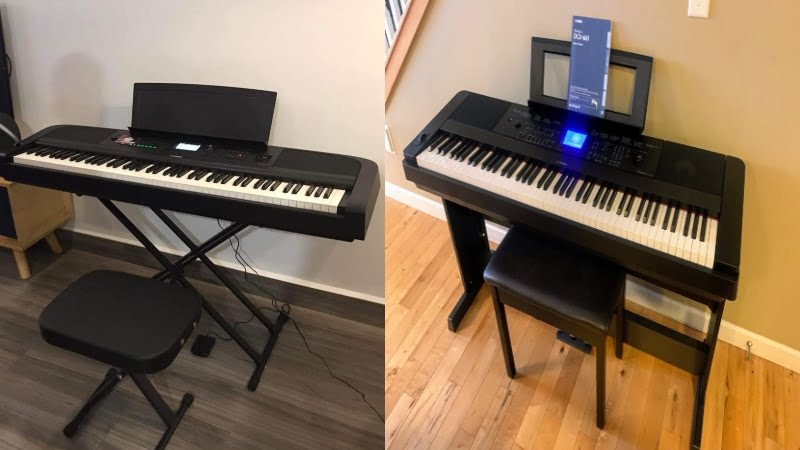In this Yamaha DGX 670 Vs 660 comparative report, you will see how the company upped the ante on the former and makes it a digital piano that’s hard to beat.
The DGX Series has truly come a long way from its first model – a simple, 76-key and 36-polyphony portable keyboard which basically serves as an inexpensive introductory product which newbies can use before they move on to the grandmaster favorite that is the Clavinova.
In 2016, Yamaha DGX 660 which soon proved to be a heavyweight in its class. Not only was this a great instrument for beginners who are just learning to play, it was packed with awesome tech that is also great for composers and performers.
Other companies tried to match up with Yamaha so several years later, Yamaha decided to develop the DGX 660 even further. Released only in 2021, the Yamaha DGX 670 is a true upgrade with so many more additions under the hood.
Today, the DGX 670 is the digital piano to beat; and it would take a few more years for other models from other brands to go head-to-head with this one.
Interestingly, the two Yamaha DGXs are still at the same price point up to this day. So in this DGX 670 Vs. 660 comparative report, see what the specific upgrades are and what Yamaha tried to compromise.
Yamaha DGX 670 Vs 660: Comparison Chart




Last update on 2024-10-18 / Affiliate links / Images from Amazon Product Advertising API
Yamaha DGX 670 Vs 660: Head to Head Comparison
For many, the better option is quite clear in the Yamaha DGX 670 Vs. 660 match-up. A real upgrade and offered at a fair price (which is actually the same as its predecessor up to today), the DGX 670 wins 4-1.
But that does not mean that the DGX 660 is already a bad choice. Aside from the great features and numerous functions, many beginners, intermediate players, and even gig-ing musicians will benefit from, this piece comes with a few accessories that Yamaha decided to take out in the DGX 670 set. And although this digital piano was made several years back, it still has a whole lot of mileage compared to other brands’ models.
Get to know the specifics of these two wonderful instruments – both way ahead of their time – in the detailed comparison below.
Feel and Playability
The Winner: Yamaha DGX 670
Save for a few improvements, the DGX 660 and 670 are practically equal in this particular chapter. Beginners and intermediate players would not be able to tell the difference in the overall feel of the keys. However, more discerning and finicky maestros may notice the slight distinction.
+Hammer Action
Yamaha outfitted both these models with one of the best hammer actions ever made – the GHS or Graded Hammer System. This perfectly replicates the tension made on the strings of acoustic pianos when it is pressed. The bass on the left are even heavier compared to the trebles on the right, which is truly impressive.
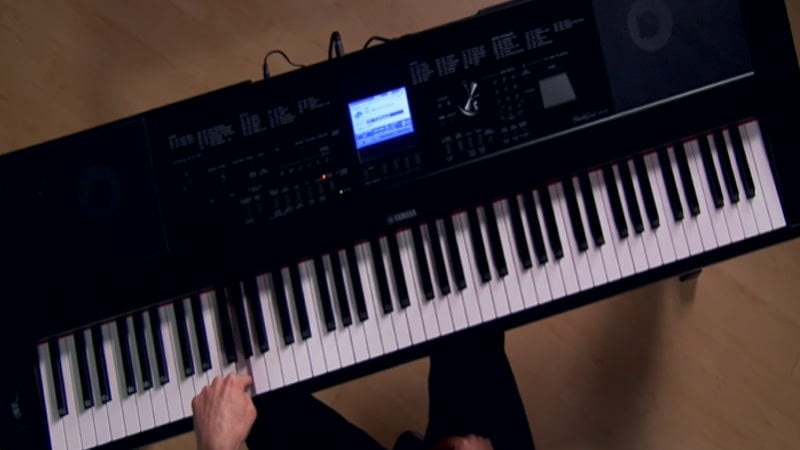
+Touch Sensitivity
This feature mimics another important detail in the overall feel of acoustic pianos – the intensity of the sound produced depending on the force put on the keys. Just like most entry-level Yamaha pieces, the DGX 660 has four – Soft, Medium, Hard, and Fixed. They added one more option to the DGX 670 – two levels of Hard and Soft, and one Medium – totaling the number to five.
+Key Texture
One of the details people often complain about with entry-level Yamahas is its plain, plastic keys. While the DGX 660 is a huge improvement from the very first DGX piece, they still retained the smooth surface of the keys. The DGX 670 has matte ebonies, thankfully, but Yamaha seemed to have (still) compromised the quality of the ivories for other features.
Tone
The Winner: Yamaha DGX 670
This is the segment where the latest DGX model wins big. According to Yamaha developers, the DGX 670 is a hybrid of three different models – the entry-level P125, the arranger PSR SX600, and the Grade A Clavinova. Having the best of those three pieces make this a practical instrument for so many people and truly unbeatable.
+Tone Generator
While every company has their own designation for the tone generation they use, most of them really use the very basic method which is sampling – capturing several samples of a note and then combining all those into one sound. The difference lies in the instrument they recorded.
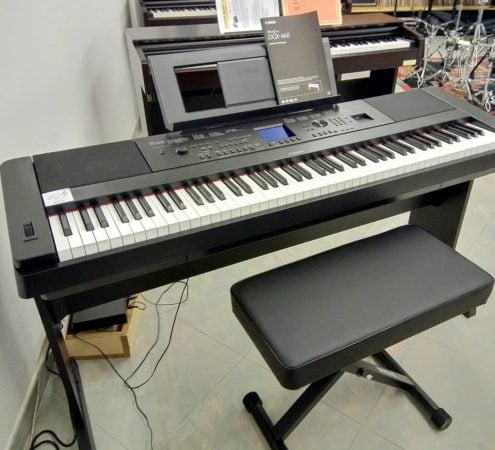
The DGX 600 makes use of the Pure CF Sound Engine, a state-of-the-art tech which utilizes the CF grand piano. The DGX 670 takes its samples from the CFX concert grand, one of the most impressive and expensive instruments out in the market.
Playing these two models side by side showed me the distinction in clarity, depth, and vibrance of sound. And yes, the DGX 670 is way more brilliant.
+Sound Library
Yamaha already equipped the DGX 660 with a remarkable sound library. No one in their right mind would complain about 151 voices, 15 drum kits, 29 featured voices, and 100 preset songs. It’s amazing that the company was still able to outdo themselves with the DGX 670 that has 600 voices, 29 drum kits, nearly 200 featured voices, and 100 preset songs.
Piano Functions and Features
The Winner: Yamaha DGX 670
When the first DGX model was released, it was meant to be a self-learning tool which is very helpful for beginners. Now, it’s serviceable for intermediate players, musicians, and even composers.
A lot of people love the DGX 660 because of its numerous functions and complementary accessories that come in the box. Yamaha designers pushed themselves even further, adding more programs and controls to the DGX 670. But they took out certain things as well, in an obvious attempt to keep the cost down.
+Polyphony
With 192 max polyphony, the DGX 660 will benefit its owner for a long time. They increased this number to 256 for the DGX 670 which is quite suitable, considering that there are over 600 voices in its sound library. With a good polyphony count, you can clearly hear the voices used and the sustained notes.
+Playing Modes
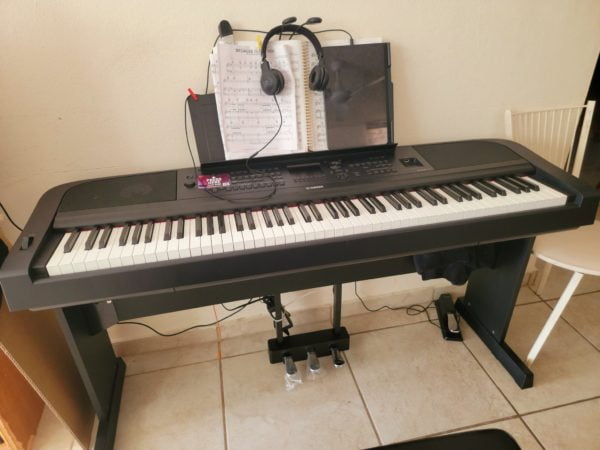
Both the DGX 660 and 670 feature the Dual and Split Modes. The former refers to layering two (or more) voices for an orchestral effect while the latter is the bisection of the whole digital piano into two 44-keys which can play two different voices. Yamaha added the Lesson mode to the DGX 670, an important mode which helps beginners learn piano with their tutor.
+Effects
Since the latest DGX models have the arranger capabilities of the PSR series, the two are equipped with several digital piano effects as well. Both DGX 660 and 670 have Reverb, Chorus, DSP, Master EQ, and IAC. Aside from adding more presets to the latter, the DGX 670 also has a Master Compressor and Stereophonic Optimizer that helps in mixing and dispersing sounds better.
+Recording Capability
Both these DGXs can record tracks, helpful for beginners who want to listen to their practice pieces and great for composers who want to immediately capture tunes they think of. The only difference is that the DGX 670 can save more at 16 with approximately 1MB, ten more than its predecessor.
+Connectivity
All recordings for the two digital pianos can be saved internally but users have an option to record and then save the tracks in an external flash drive as the two are equipped with USB to device and to host.
Basic inputs are also provided – DC INs, headphones, AUX INs, and pedals. What’s really interesting about these DGXs is the inclusion of a microphone jack, making these Yamaha pieces an all-rounder entertainment system.
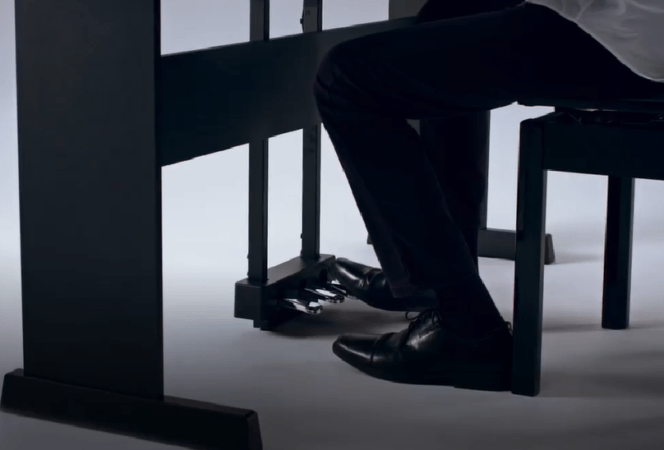
+Speaker System
Unfortunately, this is one of the features that Yamaha decided to compromise on. The built-in two 6W speakers are not powerful enough. And when compared to its contemporaries made by other companies, the speaker system of these DGXs fail to impress. The addition of the AUX IN for amplification helps.
+Accessories
This is where the DGX 660, with its numerous set inclusion like the pedal and stand, kind of beats the 670. But many, like myself, can forgive that because of the full-colored LCD screen the latter was furnished with compared to the obsolete look of the dot matrix screen of the former.
Yamaha DGX 670 Vs 660: The Similarities
At the most basic level, the DGX 670 and 660 are practically the same – with mostly identical features and functions. But no one can deny that Yamaha enriched the 670 to match the needs of their users and to ensure their place on top of the pack.
Quick Rundown of Yamaha DGX 670
- CFX Stereo Sampling faithfully reproduces the sound of Yamaha's flagship CFX Full Concert Grand.
- GHS weighted action is heavier in the low keys and lighter in the high keys, just like an acoustic piano. The special matte black key tops are designed to absorb moisture and remain tactile after extended use without becoming slippery.
- Adaptive Style automatically shifts between the Main Style Variations by changing your velocity and number of notes played.
- Unison and Accent function adds a doubled voice to your melody line and musical "hits" when you accent your notes.
- Smart Chord lets you play great-sounding chords from simple Pop triads to complex jazz 7th chords with just a few fingers.
Last update on 2024-10-18 / Affiliate links / Images from Amazon Product Advertising API
Quick Rundown of Yamaha DGX 660
- Piano Dimensions: 55” W x 5-3/4” H / with keyboard stand (29-15/16”) x 17-1/2” D | Weight: 46 lbs/ with keyboard stand: 61 lbs
Last update on 2024-10-18 / Affiliate links / Images from Amazon Product Advertising API
Product Videos
Related Articles to Yamaha Dgx 670
- Yamaha DGX-670 vs YDP 144: Finding the Best Digital Piano
- Yamaha DGX 670 vs Casio PX S3000: Which Piano Comes Out on Top?
- Yamaha DGX 670 vs Roland FP 60x: Which Piano Comes Out on Top?
- Yamaha P125 vs DGX 670: Which Piano Comes Out on Top?
- Yamaha DGX 670 Vs P515: Which Gives You Bang For Your Buck?
- Yamaha DGX 670 Vs Roland FP 30x: Which Works Better For Your Needs?
Related Articles to Yamaha Dgx 660
- Yamaha YDP-164 vs DGX-660: Why You Should Go for the DGX-660
- Yamaha DGX-660 vs Roland FP-90: Why the Roland FP-90 Is the Better Pick
- Yamaha DGX-530 vs 660: Why the DGX-660 Is the Better Pick
- Yamaha DGX-505 vs 660: Why the DGX-660 Is the Better Pick
- Yamaha DGX-660 vs DGX-640: A DGX Comparison
- Yamaha DGX-660 vs DGX-630: A DGX Comparison
- Yamaha DGX-620 vs 660: Finding the Best DGX Model
- Yamaha DGX-660 vs YDP-163: Which Is the Better Piano?
- Yamaha DGX-660 vs Roland Juno DS-88: Which Is the Better Piano?
- Yamaha DGX-660 vs Casio PX-360: Which Is the Better Piano?
- Yamaha DGX-660 vs YDP-144: Which Is the Better Yamaha Piano?
- Yamaha DGX-660 vs Korg Havian 30: Which Is the Better Digital Piano?
- Yamaha DGX-660 vs Casio CGP-700: Which Is the Better Pick?
- Yamaha DGX-660 vs YPG-535: Finding the Best Yamaha Digital Piano
- Yamaha DGX-660 vs P515: Is the P515 Worth the Extra Cost?
- Yamaha DGX-660 vs P-115: Which Yamaha Model Is Better?
- Yamaha DGX-660 vs Casio PX-560: Which Piano Offers More Value For The Money
- Yamaha DGX-660 vs 650: A DGX Comparison
- Korg XE-20 vs Yamaha DGX-660: Finding the Best Digital Piano
- Yamaha P45 Vs DGX-660: A Head-to-Head Comparison
- Yamaha YDP-103 Vs DGX-660: Which Is The Better Yamaha Piano?
- Casio PX-770 Vs Yamaha DGX-660: Should You Get A Portable Or Console Digital Piano?
- Yamaha P71 vs DGX-660: Can the Amazon Exclusive Beat Out the Premium Model?
- Yamaha P125 vs DGX 660 Comparison: Can the P125 Hold Its Own Against the DGX 660?
References:
- Yamaha DGX 670: https://usa.yamaha.com/products/musical_instruments/pianos/p_series/dgx-670/index.html
- Yamaha DGX 660: https://usa.yamaha.com/products/musical_instruments/pianos/p_series/dgx-660/index.html
Lulacruza is an electronic folk duo operating at the junction of the hypermodern and the ancient. Our music weaves together hypnotic female singing, South American folk instruments and electronic processing, while channeling pulsating waves from the source of creation.
Lalucruza is also a community where you can connect with other music lovers to collaborate, exchange ideas and share knowledge. A platform for who wants to learns the basics of playing piano, guitar, drum masters’ technique, etc.. is the premise of our website.
